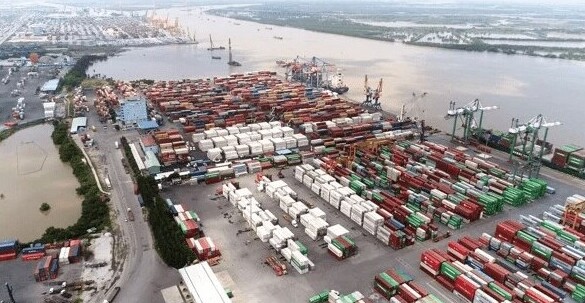Accounting for half to two-thirds of transportation costs, transportation costs are considered to be the largest burden in total logistics costs. The transport infrastructure problem is the way out to significantly reduce the already high domestic logistics costs.
About 3-4 years ago, a container truck running from Hai Phong port to Hanoi if it went well also took 5 to 6 hours, the price of each trip ranged from 6 to 7 million. Congestion occurs continuously, sometimes lasting up to half a day. Each time such traffic congestion, damage to businesses a million dong / trip because of fuel costs, turnaround time, contract owners fine contracts …

Since the Hanoi – Hai Phong expressway, the Dinh Vu crossroad overpass, Le Hong Phong overpass, … have solved most of the congestion situation in the Hai Phong gateway area. If the average freight of 1 container from Hai Phong port to Hanoi is only 4 – 4.5 million dong, the cost of transporting goods through Hai Phong port area by road every year has been reduced by thousands. billion for businesses.
Previously, when Hai Phong did not have a Lach Huyen deep-water port, shipping lines operated on average ships of 1,200 to 1,500 TEU at ports. In both 2017 and the middle of 2018, Hai Phong’s navigational channels were sedimented, these ships could not be directly operated but had to be lowered or transshipped by barges to ports.
Shallow flow, limited handling capacity leads to huge costs for shipping lines. In addition to the cost of handling, disturbing schedules, delivery schedules, the cost of each hour of the ship also costs tens of thousands of USD / day.
On May 13, 2018, Lach Huyen International Port (Hai Phong) was officially put into operation. With a 17m deep navigational channel, 14m berth depth and modern port infrastructure, this port can accommodate vessels up to 14,000 TEUs in cargo handling. If compared with the past, each shipment, shipping lines can cut costs hundreds of thousands of dollars. And especially has attracted the attention of many large international shipping lines.
The “double card” of road – seaport is really … a couple of friends advanced when the first time the volume of goods through Hai Phong port had a strong growth of 18.4% in 2018 (109 million tons).
Bad or good?
Just looking at the picture of Hai Phong’s transport infrastructure for a short time shows that the transport cost has dropped a lot. In addition to directly reducing costs for businesses, the competitiveness of domestic enterprises is also enhanced.
However, in the whole country, among the 5 types of transport, there are only sea and roads that play a leading role but are also uneven. The country has more than 200 seaports but only a few regional ports can participate in the international import and export of goods: ports in Hai Phong area, Da Nang – Hue area, Ho Chi Minh City and Vung Tau. Ship. The road has nearly 20,000km of asphalt roads but the number of highways is only on the fingertips. In the north, the road connecting with the border gates: Cao Bang, Lang Son, Mong Cai, … still “elephant head, rat tail”. The duo of roads – seaports are at … exit through the port, but not really connected smoothly at the first and last points.
Although the theory still has to combine multimodal transport to take advantage of each type. However, in reality 70% of goods are still transported by road. In addition to the improved infrastructure costs, roads – ports still face other obstacles are unofficial costs at the stage of procedures and … tolls. But, in the immediate future, the duo is still the trump card in cutting logistics costs.
